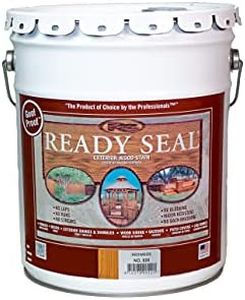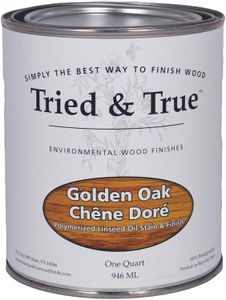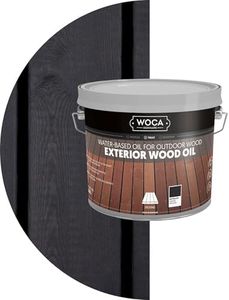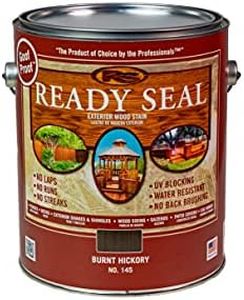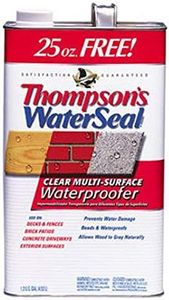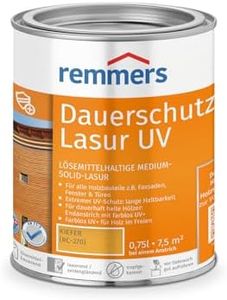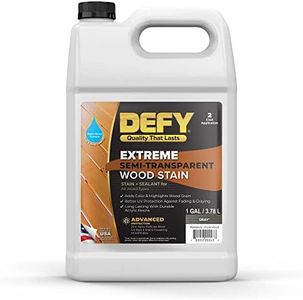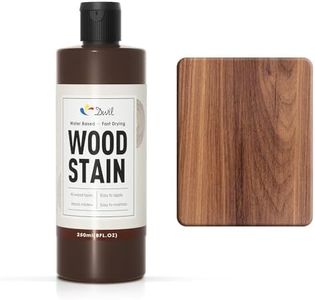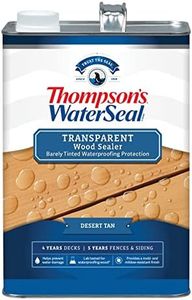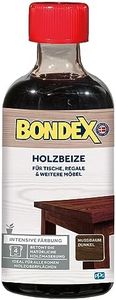We Use CookiesWe use cookies to enhance the security, performance,
functionality and for analytical and promotional activities. By continuing to browse this site you
are agreeing to our privacy policy
10 Best Deck Stains
From leading brands and best sellers available on the web.Buying Guide for the Best Deck Stains
Choosing the right deck stain can significantly affect both the appearance and durability of your outdoor space. Your main aim should be to find a stain that protects your wood deck from the elements, enhances its natural beauty, and meets your desired maintenance level. Before picking a product, consider factors such as your deck’s age, wood type, previous treatments, and the look you want to achieve. Remember, no stain is truly 'maintenance-free,' but picking the right one can make upkeep easier and keep your deck looking fresh for longer.Opacity (Transparency/Color Coverage)Opacity refers to how much of the wood’s natural grain and texture you can see after staining. It’s important because it affects both the final look of your deck and its level of protection. There are generally four levels: clear, semi-transparent, semi-solid, and solid. Clear stains highlight the wood’s natural look but offer less protection. Semi-transparent stains provide more color while still showing some wood grain, striking a balance between aesthetics and shielding. Semi-solid stains further cover the wood but still allow a hint of texture, while solid stains offer the strongest protection and color coverage, almost like paint, and are best for old or weathered wood. Choose opacity based on how much you want to see the wood grain versus how much protection or color change you want.
Base Type (Oil-Based vs. Water-Based)The base type is the liquid medium that carries the stain's pigments and protective elements. Oil-based stains typically penetrate deeper and can enhance the wood’s appearance, requiring less frequent reapplication but needing longer drying times and potentially more difficult cleanup. Water-based stains dry faster, are easier to clean up, and are better for the environment, but may not last as long in harsh weather. Your choice depends on your priorities: longevity and depth of finish (oil-based), or convenience and quicker project time (water-based).
UV ProtectionUV protection measures how well the stain shields your deck from the sun’s rays, which can cause fading, graying, and damage over time. Stains with strong UV blockers are important in sunny or exposed areas. Typically, more opaque stains (like solid or semi-solid) offer better UV protection, while clear finishes offer the least. If your deck gets lots of direct sunlight, prioritize a product with high UV protection to preserve its color and wood fibers.
Mildew and Mold ResistanceMildew and mold resistance refers to how well the stain prevents fungal growth on your deck, which can make surfaces slippery and unsightly. This is especially important in damp, humid, or shaded environments. Some stains have special additives to stop mold and mildew from taking hold. Choose a stain with strong mildew resistance if your deck is near water, under trees, or doesn’t dry out quickly after rain.
Durability/LongevityDurability relates to how long the stain will last before needing to be reapplied, and how well it resists peeling, cracking, or fading over time. Stains vary, with some lasting a year or two and others several years. Generally, solid stains last longest, with clear or semi-transparent ones requiring more frequent maintenance. Choose a level based on how much time you want to spend on future upkeep; if you want a low-maintenance approach, higher durability is ideal.
Ease of ApplicationEase of application deals with how simple it is to put the stain onto your deck. Some stains are forgiving, working well with brushes, rollers, or sprayers, even if you’re not experienced. Others require more careful prep and technique. If you’re new to deck maintenance or want a quick project, look for a stain labeled as ‘easy to apply’ and always read instructions before starting.
Environmental ImpactEnvironmental impact covers how ‘green’ a stain is, focusing on factors like VOC (volatile organic compound) content. Lower-VOC or eco-friendly stains release fewer harmful chemicals, making them safer for you and your surroundings. If you’re concerned about air quality or have children or pets who frequent the deck, consider a water-based product or one labeled as environmentally friendly.
